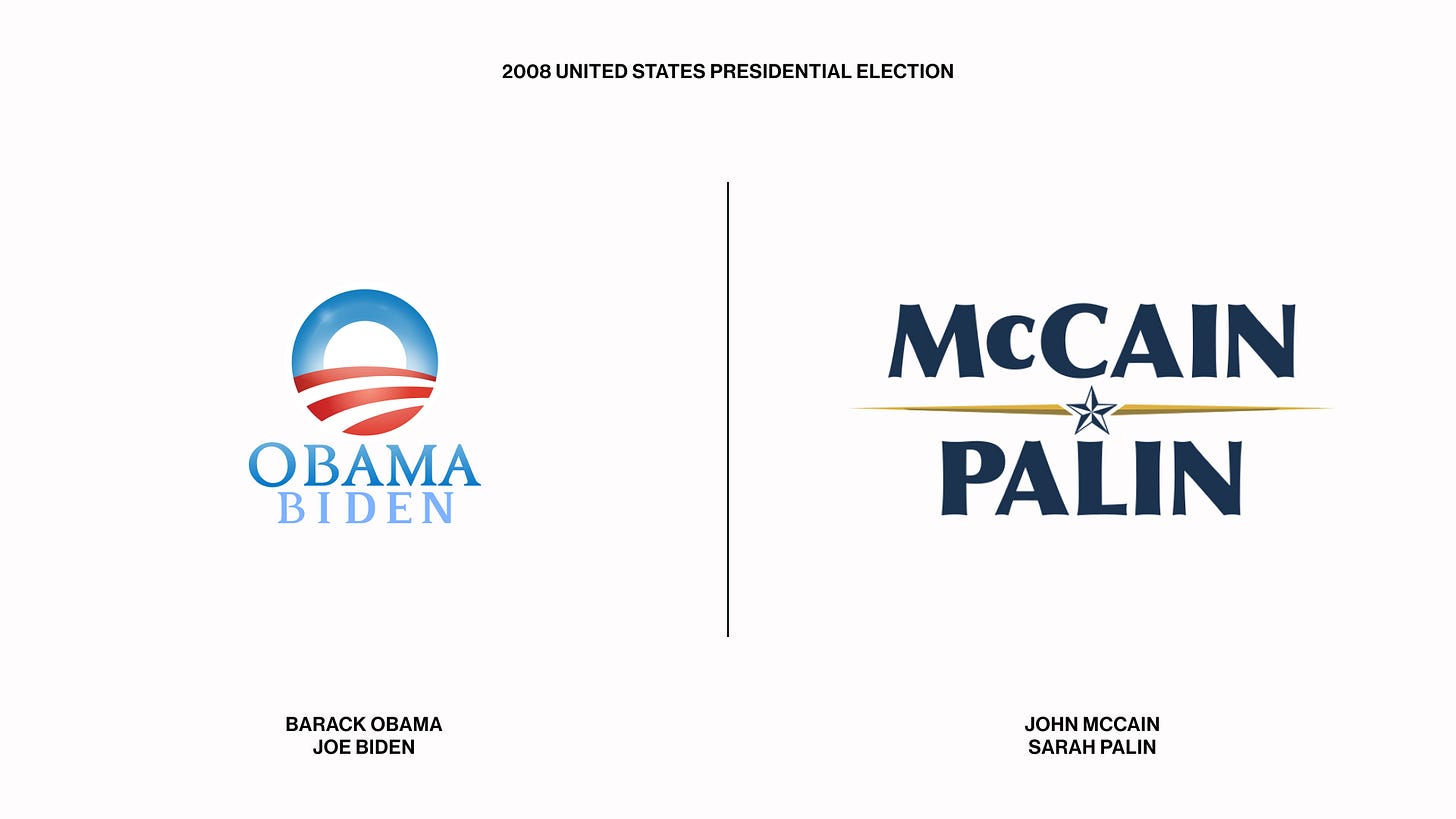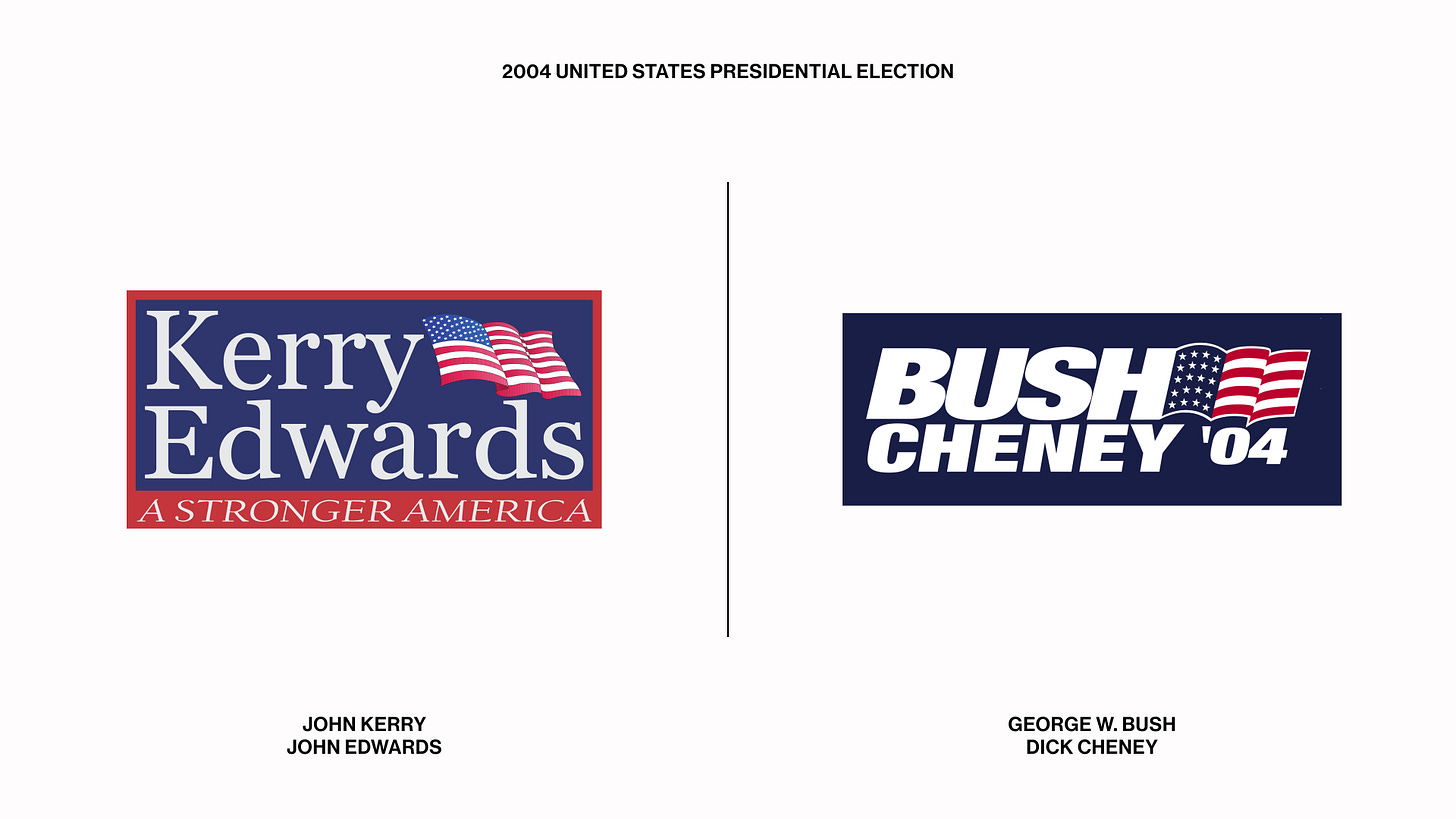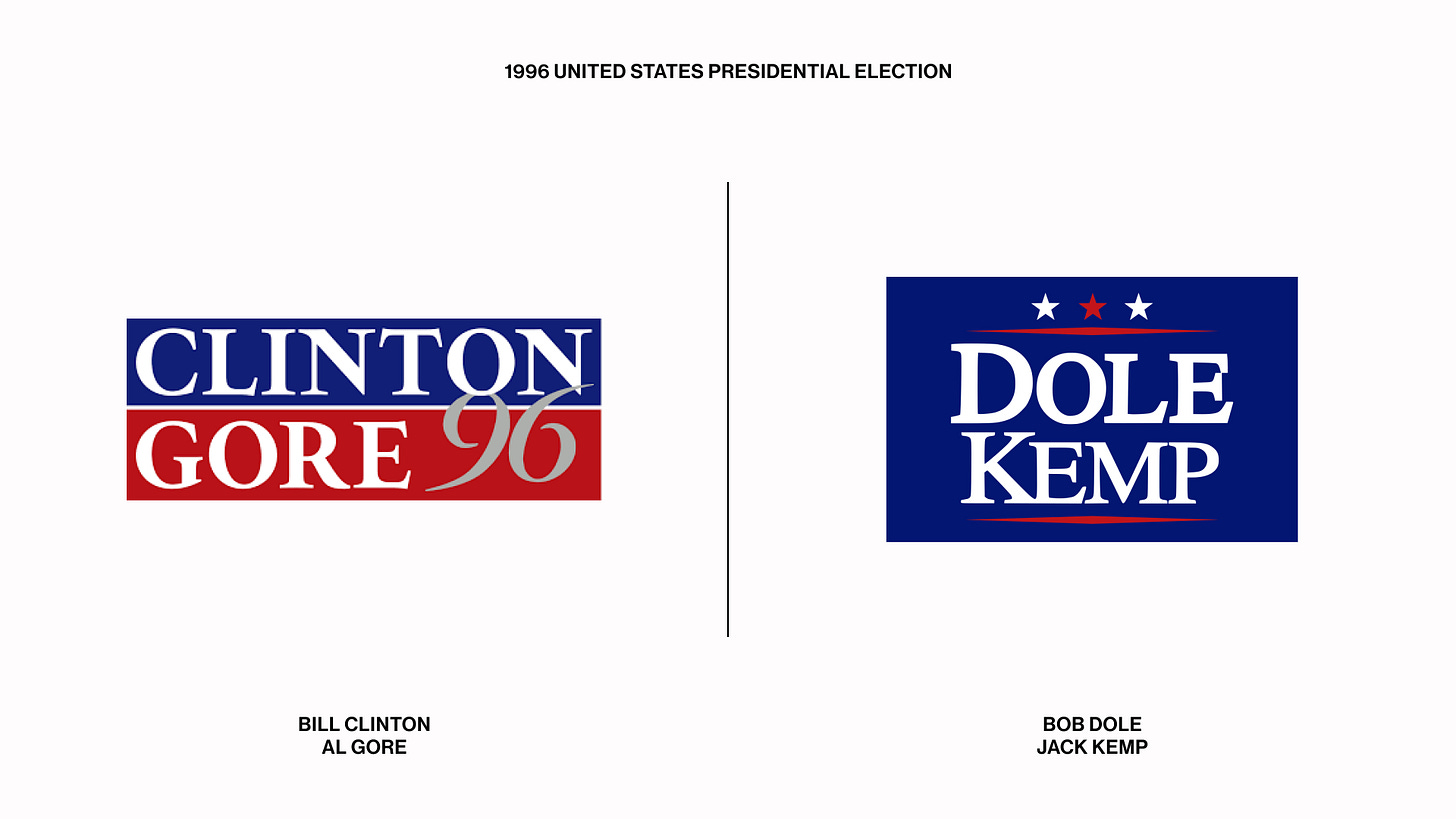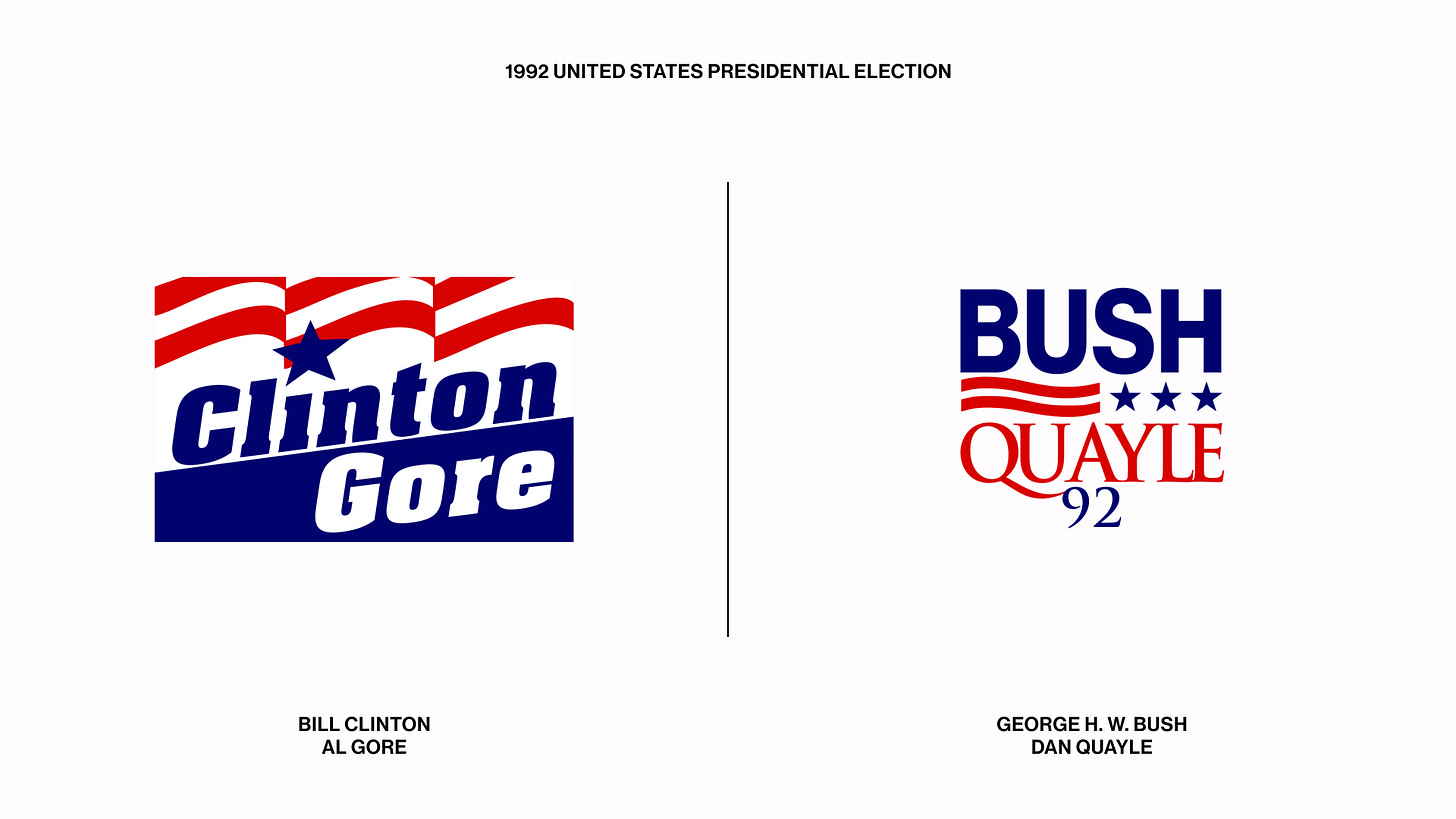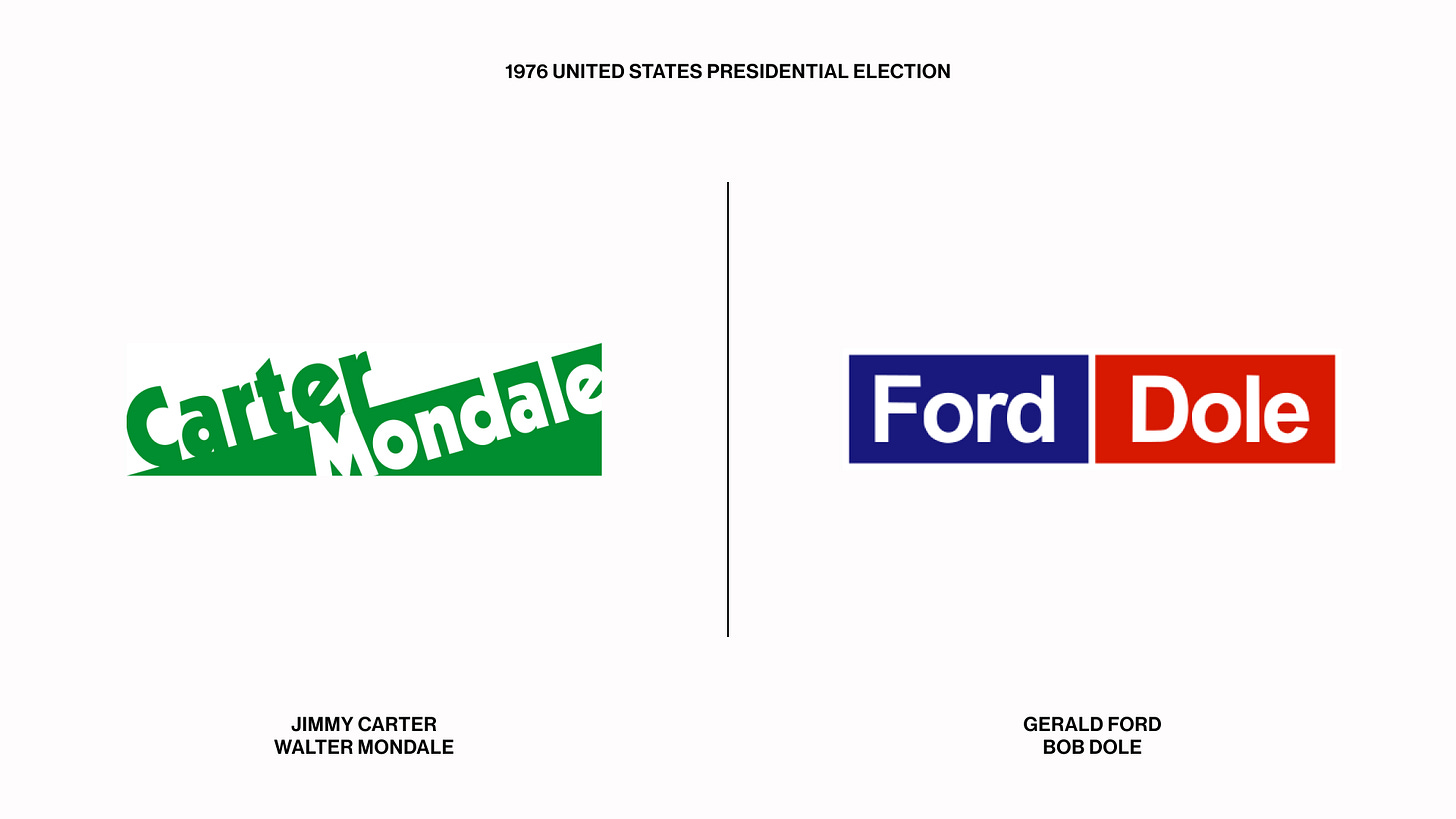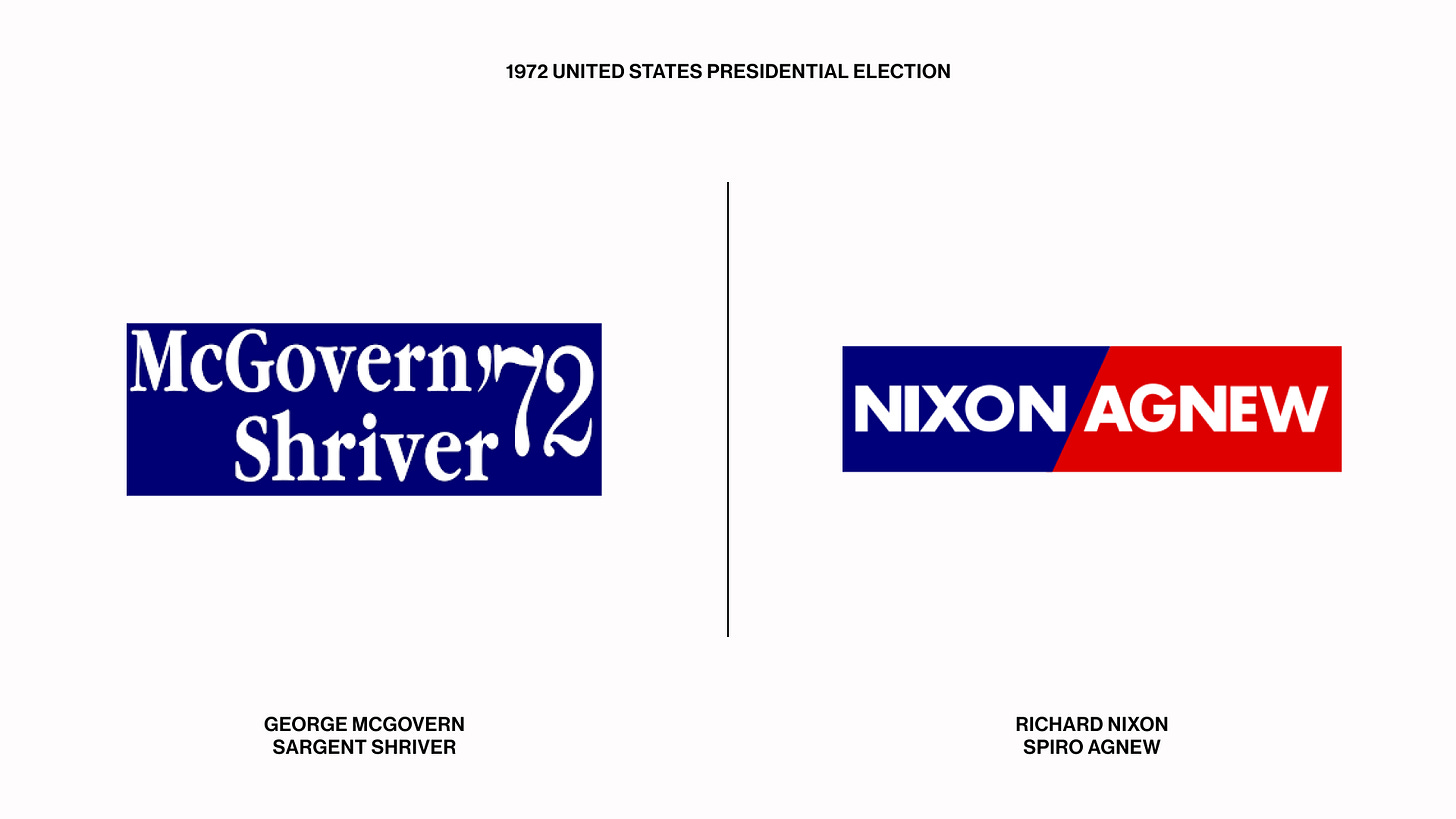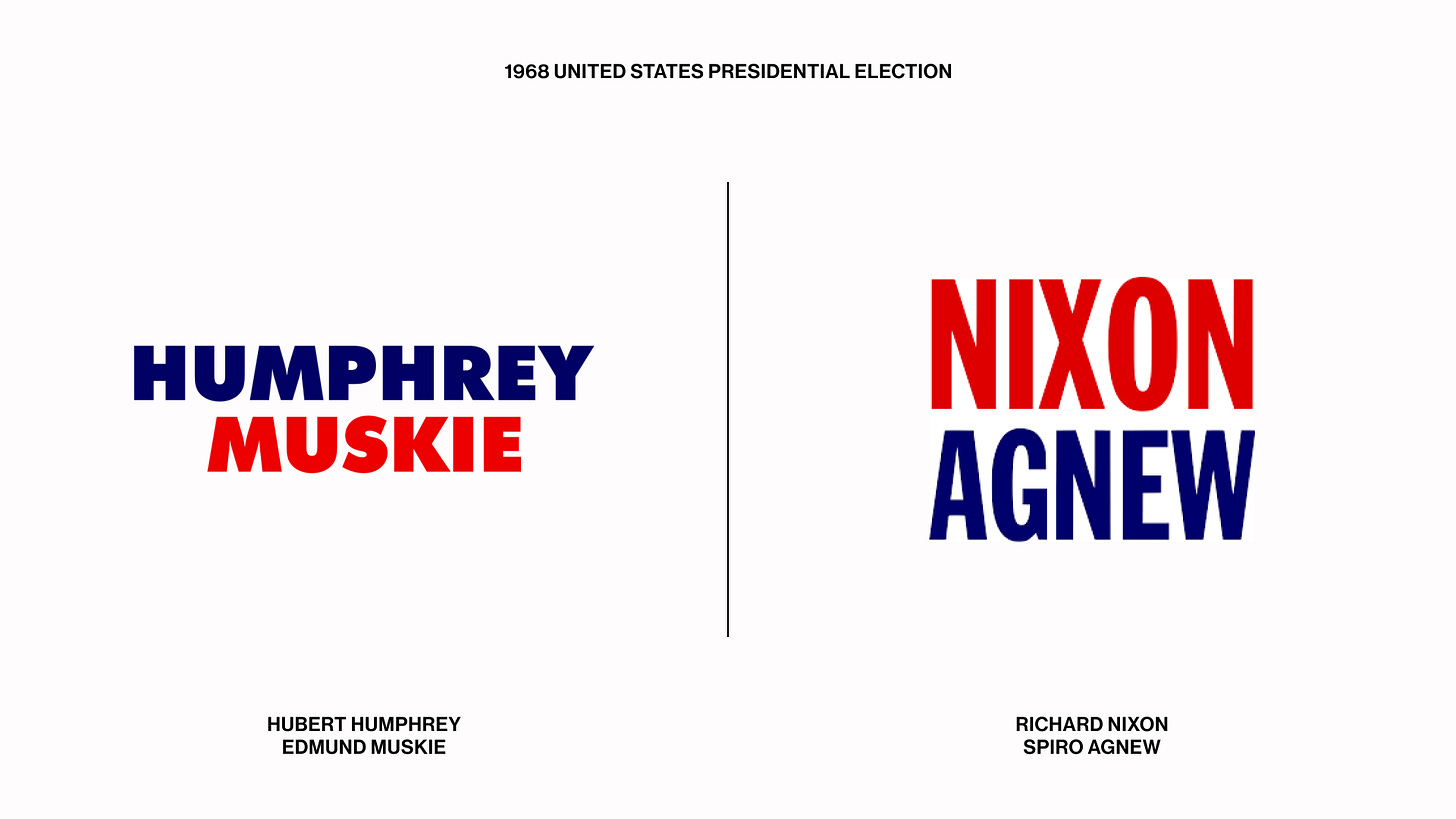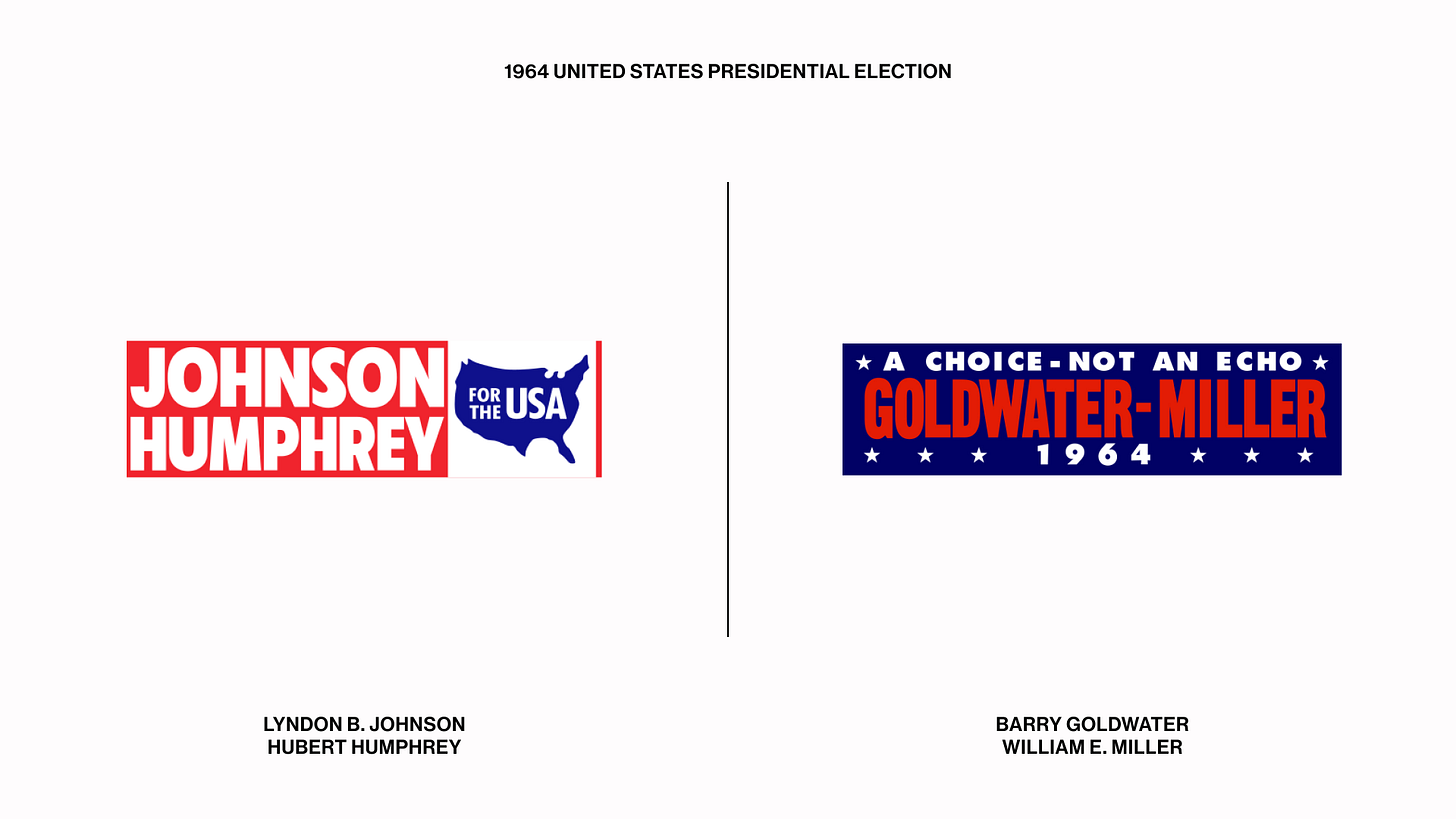presidential campaign logos of past and present - part 1
think you're a graphic design critic in the making? now is your time to shine.
Here’s a fun fact. There's only been one presidential candidate in the past 17 elections whose campaign logo didn't use the traditional American colors of red, white and blue. Can you guess who? Before we get to the answer, I wanted to provide a bit of context for this post.
If there’s one thing we’ve learned so far from this brat summer (are you tired of puke green, yet?), it’s that good branding doesn’t have to be overly complicated. However, it does have to emotional. Just ask @ladymisskay why some musical artists are having better album rollouts than some of their peers. I couldn’t agree more. Now more than ever, good branding helps people stand out amongst the crowd, or at the very least, capture your attention long enough to break the cycle of incessant ad-washed social posts.
Honestly, I can’t imagine what future generations will think when they open their U.S history textbooks to the section on the early 2020s and see a page dedicated to the Kamala HQ twitter page adopting brat aesthetic. Congrats Charli XCX, you’ve officially made it into the American history books.
sigh, I digress.
Branding, in the context of political campaigning, is all about conveying a certain feeling or message to an audience through the use of graphical marks, type, color, and composition.
(In reality, branding is much more than just a logo. It’s about shaping perception. It comprises every part of a company that interacts with its audience. This means everything from your brand voice, marketing strategy, web design, social media, etc). However, for the purposes of this post, when I refer to branding, I’ll solely be talking about logo marks.
In part 1 of this series, we’ll be closely examining campaign logos for presidential candidates and their running mates dating all the way back to 1960. One thing that I discovered in doing research for this post is that campaign logos are a fairly recent trend or form of marketing / campaigning for presidential nominees. Prior to JFK and Nixon, presidential candidates weren’t using campaign logos like we think of them today. Instead pins and illustrative banners were more popular methods of campaigning. I’ll show more examples in part 2.
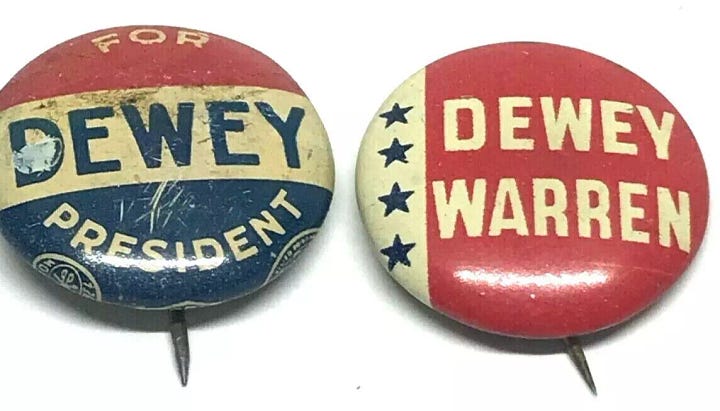
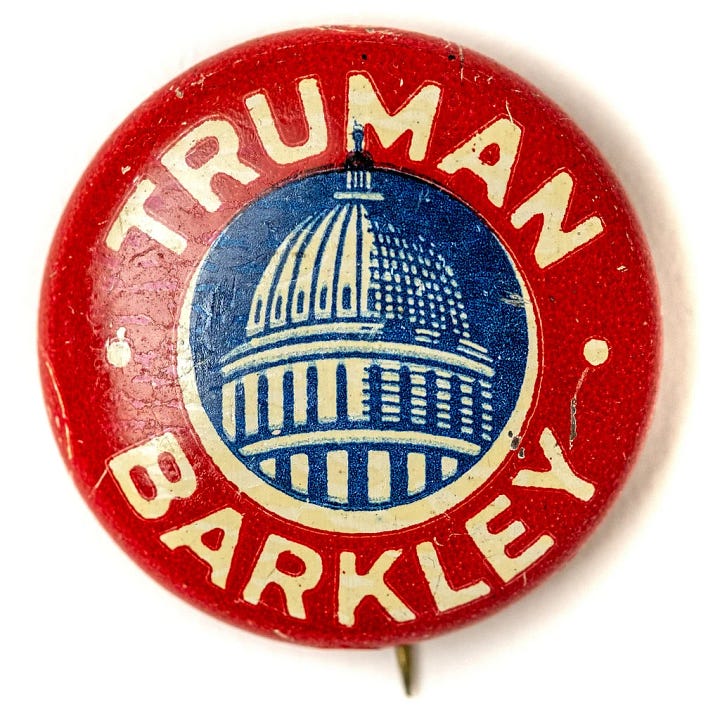
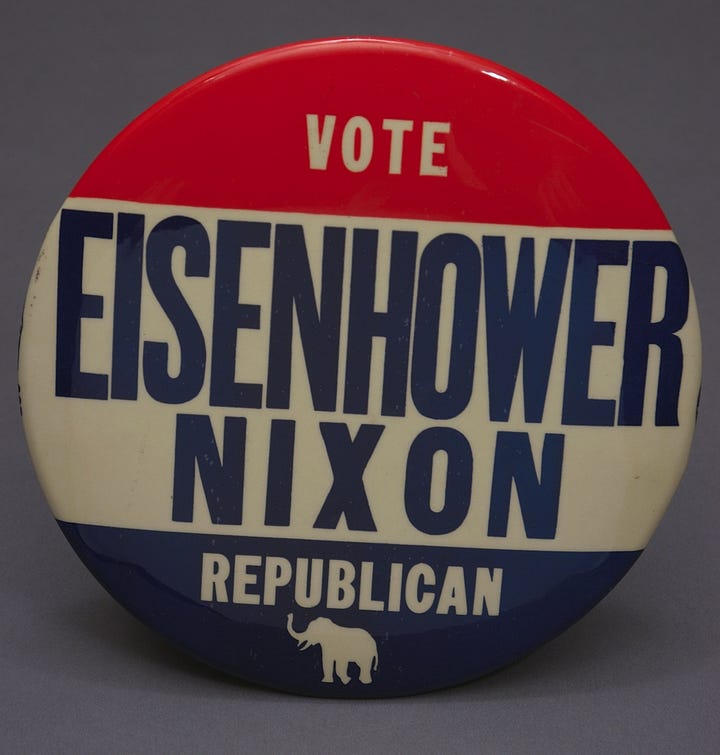
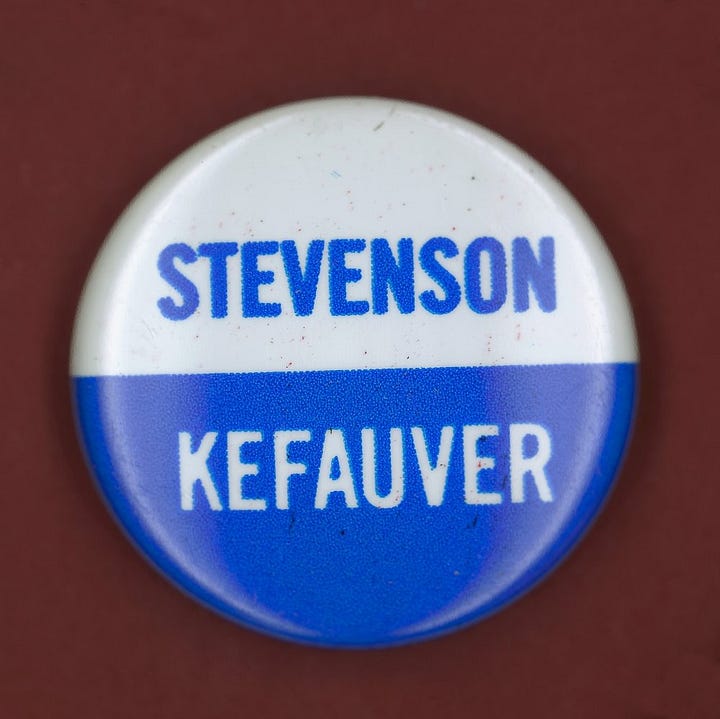
In part 2, which will come at a later date, I’ll go in depth examining campaign logos from a graphic design perspective and give my opinion on which logos I think worked well and which ones should have been thrown in a dumpster fire.
As we already know, some people have already started to examine the kerning on the new Kamala Walz campaign logo with a fine comb, while others have called its debut ‘underwhelming’. If there’s one thing that’s positive, it’s that it’s lightyears away from achieving the same massively cringey (or rizzed! depending on how you view it) second-cousin vibes of the iconic 2016 Jeb! logo.
So without further ado, let’s look back at the history of campaign logos for presidential candidates and their running mates:
Disclaimer: This post by no means is intended to sway readers to vote for a certain party in the upcoming election, nor claim that the reason previous candidates won their elections was because of their campaign logo design. This post is purely for fun and for the art of senseless debate.
2024
Democratic Party (DP): Kamala Harris & Tim Walz
Republican Party (RP): Donald Trump & JD Vance
2020
DP: Joe Biden & Kamala Harris
RP: Donald Trump & Mike Pence
2016
DP: Hillary Clinton & Tim Kaine
RP: Donald Trump & Mike Pence
2012
DP: Barack Obama & Joe Biden
RP: Mitt Romney & Paul Ryan
2008
DP: Barack Obama & Joe Biden
RP: John McCain & Sarah Palin
2004
DP: John Kerry & John Edwards
RP: George W. Bush & Dick Cheney
2000
DP: Al Gore & Joe Lieberman
RP: George W. Bush & Dick Cheney
1996
DP: Bill Clinton & Al Gore
RP: Bob Dole & Jack Kemp
1992
DP: Bill Clinton & Al Gore
RP: George H. W. Bush & Dan Quayle
1988
DP: Michael Dukasis & Lloyd Bentsen
RP: George H.W. Bush & Dan Quayle
1984
DP: Walter Mondale & Geraldine Ferraro
RP: Ronald Reagan & George H.W. Bush
1980
DP: Jimmy Carter & Walter Mondale
RP: Ronald Reagan & George H.W. Bush
1976
DP: Jimmy Carter & Walter Mondale
RP: Gerald Ford & Bob Dole
1972
DP: George McGovern & Sargent Shriver
RP: Richard Nixon & Spiro Agnew
1968
DP: Hubert Humphrey & Edmund Muskie
RP: Richard Nixon & Spiro Agnew
1964
DP: Lyndon B. Johnson & Hubert Humphrey
RP: Barry Goldwater & William E. Miller
1960
DP: John F. Kennedy & Lyndon B. Johnson
RP: Richard Nixon & Henry Cabot Lodge Jr.
And in case you missed it, the answer was President Jimmy Carter.









